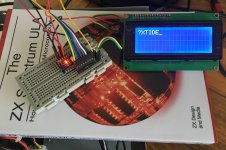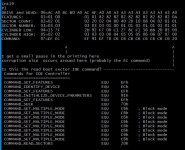migry
Experienced Member
Yes. Strangely the main form of corruption is the C-like (cedillas?) characters for the NWDOS7(*) CF, sometimes the string is blank (for the MSDOS 3.11 CF).Does that corruption vary, e.g. where the strange characters appear in the model string?
(*) Apparently Novell DOS 7 was abbreviated NWDOS!
Just FYI. While trying to debug the hardware, having swapped the faulty 74LS688 out, I used debug to "probe" for the card. This is how I discovered that the card is addresses at even port addresses. Initially I sent the "EC" (Identify) command and repeatedly read the data register (in 300). I wrote down the hex values and found that the expected CF 2 byte signature was wrong. This alerted me to the fact that I needed to use a command to put the card into 8-bit mode. Once I did this and re-issued the Identify command, I read out a string of sensible values from port 0x300. I saw the ASCII serial number, but stopped around there.


